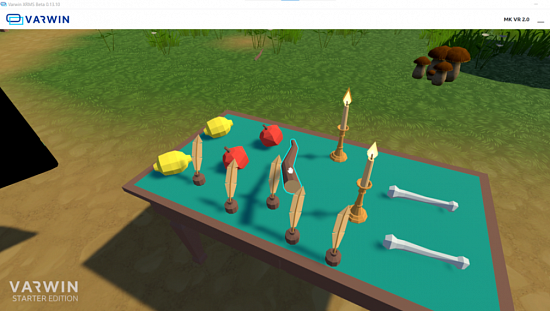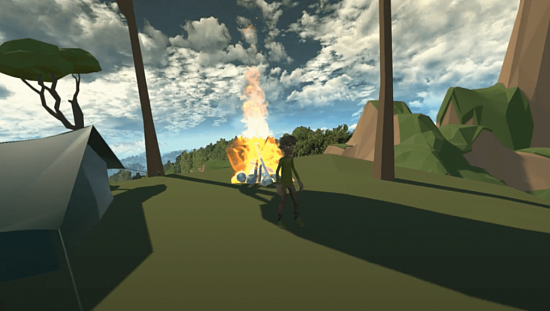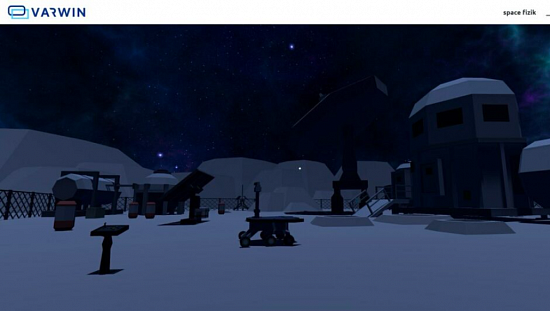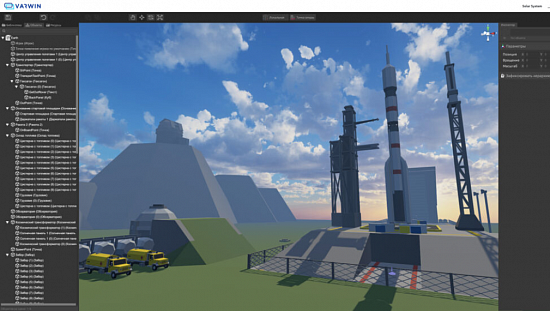Varwin Education Hackathon 2020
The Varwin Education Hackathon for grades 7-11 was called The VR Developer: a Career for the Future. 250 students developed their own VR applications under the supervision of teachers and tutors. Some of the best apps from this event are being used in classrooms today.

Hackathon
The Varwin Education Hackathon for grades 7-11 took place in Russia in 2020. It was called The VR Developer: a Career for the Future, and 250 students from across Russia developed their own VR applications under the supervision of teachers and tutors. Some of the best apps from this event are being used in classrooms today.
Virtual design at the hackathon took place on the Varwin XRMS platform. Its ease of use and functionality allowed students with no special skills or training to create 80 full-blown teaching applications. The most outstanding of these projects advanced to the super final, and three winners are ready for introduction into school programs. The hackathon final and the video of winners are available on Varwin’s Youtube channel.
This interregional event was organized by the Varwin company in conjunction with the Far Eastern Federal University, EDCOMM, and the Kruzhok Movement of the National Technology Initiative. Partners included Taiwan’s IT giant HTC, which donated VIVE Focus Plus helmets to the prize fund and showed interest in promoting the event finalists.
Seven reasons to use VR technologies in schools right now
Russia currently has an ongoing government program to supply VR helmets to schools; however, many schools are unable to find applications for them. Meanwhile, tools have appeared on the market that facilitate the introduction and scaling of virtual technologies in educational settings. And in many cases, VR helmets are not even required.
1. VR applications enable the creation of lessons that bring together various subjects and disciplines.
Virtual reality-based training applications can encompass several topics and different fields of study. If hackathon entries are anything to go by, VR may help create entire virtual schools where each lesson comes to life through separate scenes and unique mechanics. Chemistry and geography, English language and psychology, PE, world art and anatomy, health and wellness skills - all of these can be woven together in a virtual world rather than taught only as disjointed subjects. A simulator for building a fire and conducting safe electrical experiments is just one example of the interdisciplinary solutions that are possible. Weaving together subjects in a virtual setting helps students to understand the connection between phenomena, events, and the inner workings of the world around us.
Section is not found
«It is surprisingly easy to work on the Varwin platform: it took me a couple of hours to get the hang of it and a mere three days to complete my hackathon project about chemical elements at home. What I like is that virtual technologies help not just learn a subject in the same way as a textbook, but also to become knowledgeable of various fields of study and remember how they relate to one another. – Sergei Kiselev, Pupil of French Gymnasium No. 16 in Novosibirsk.
2. VR technologies offer easy and immersive ways to explain complex or unsafe topics.
Virtual reality can be used to “transfer oneself” inside an organic cell, or to the bottom of the Mariana Trench, or to the farthest galaxy from Earth. These remarkable experiences will be more memorable for students than the most detailed diagram in a textbook. Virtual reality simulators are also helpful in preparing students in the event of a fire or other emergency.
The Varapaparam team are hackathon winners from Veliky Novgorod. Their VR chemistry project allows students to conduct hazardous chemical experiments in a completely safe virtual environment.
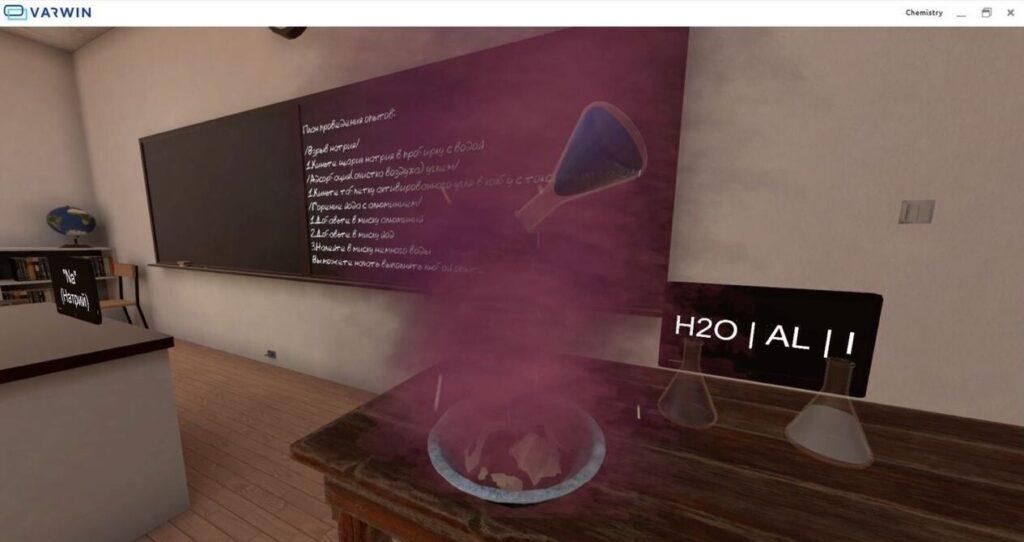
3. It takes several days to develop a VR lesson, but that one lesson can reach an unlimited number of students.
One interactive VR platform effectively replaces an entire scientific laboratory and requires absolutely zero special skills. This means that VR technologies can save time and financial resources for schools with a single investment lasting far into the future.
4. Virtual reality helps students better grasp and remember information.
When we read or hear about something new, we naturally want to get a feeling for it. With VR, we are not limited by written descriptions or illustrations in textbooks. We are able to truly research and experience the subject and to get a feeling for how it works. This is a powerful and scientifically proven way to effectively teach both children and adults.
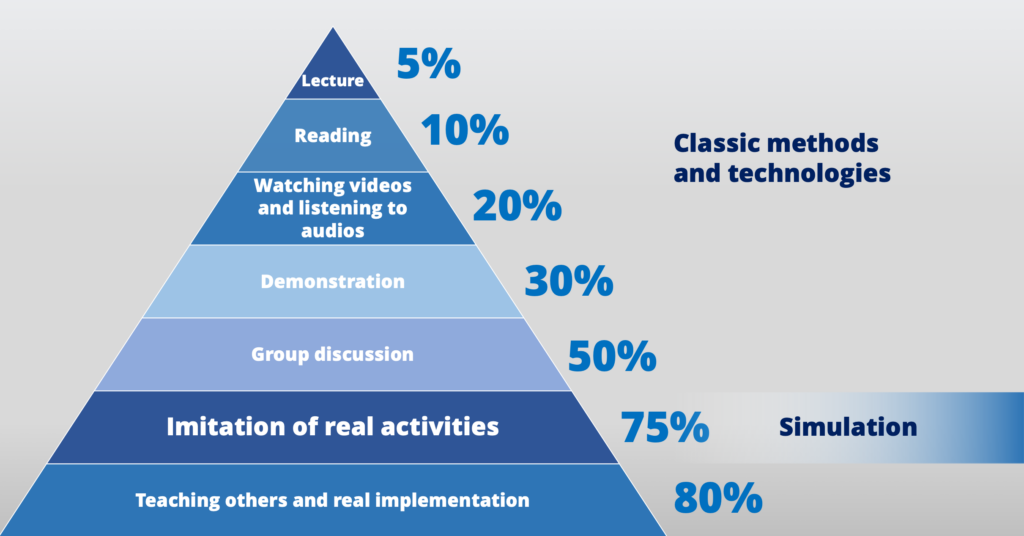
5. The latest platforms are making VR easier than ever to implement, update, and change.
In the past, VR tools were complex and cumbersome, and making any alterations to a program could take months. But now - all of that has changed. With the Varwin XRMS platform, you can easily modify any settings in the entire program within two minutes. The platform’s core is made up of a set of tools to create and manage 3D worlds, offering ample opportunities for the customization and easy handling of every visual component.
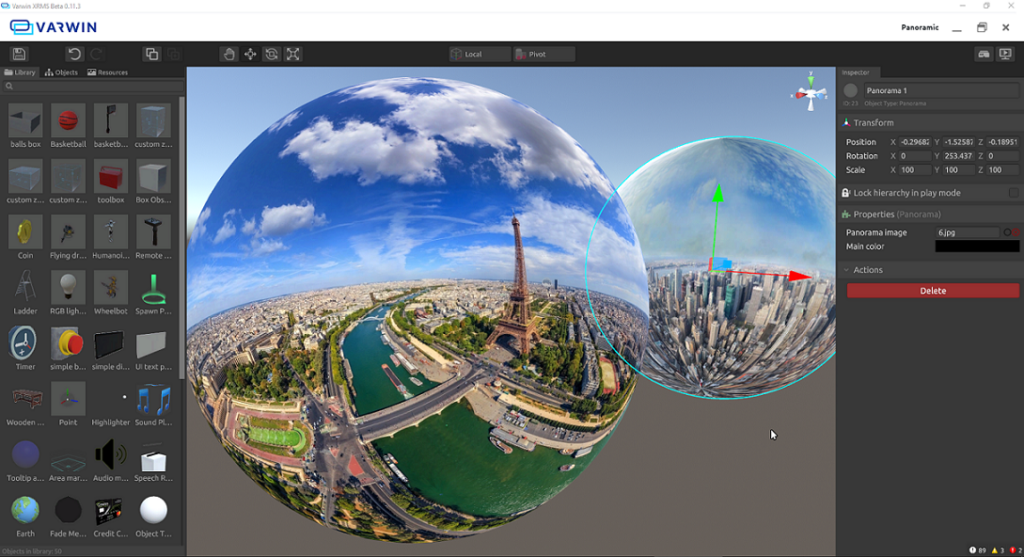
This is how the Varwin XRMS platform editor interface looks.
The built-in Blockly editor allows implementing various use cases and designing sequences of actions inside the created virtual world without special skills.

Blockly makes it possible to create and adjust VR projects while also learning the development logic that goes on behind the scenes.
6. Schools can use VR technologies to collaborate and exchange content at their own hackathons.
The Varwin virtual design environment is encouraging an ecosystem of proactive students who are ready not only to further develop their skills but also to contribute in a big way to academic progress. The intuitive equipment for virtual design paves the way for a large-scale flow of multimedia educational content. This new river of creativity encourages schools, colleges, and universities to stage their own hackathons and competitions to inspire young developers and to share projects and ideas.
7. Virtual lessons keep students focused, even during distance learning.
Ongoing safety concerns during the pandemic are causing many educational institutions to pursue full or partial distance learning. Parents and teachers point out that students find it difficult to focus during online lessons. Many experience distractions and have difficulty understanding the subject. Lessons with elements of virtual reality offer a solution: they grab the students' attention and make the topic more tangible and understandable. And this can be accomplished without the use of VR helmets. Students can immerse themselves in the virtual worlds created on the Varwin XMRS platform without special devices. One simple program downloaded onto a computer provides everything needed. During a lockdown, this is a significant tool to have. And once everybody is back in school - the same applications will be accessible for use with VR helmets.
«It is customarily believed that virtual reality is something beyond comprehension, created by egghead scientists in secret laboratories. But we saw from our own experience that any Year 7 pupil is capable of creating a virtual lesson or training app. Admittedly, no one knows better how to make the learning process interesting than the pupils themselves. There are many pupils with imagination. VR helmets are issued by the government, and once the simple and user-friendly Varwin XRMS platform is downloaded it will be possible to make an unlimited number of training projects without buying anything else. Apart from obvious cost-cutting, the teachers will be relieved of some of their burdens, the pupils engaged more intimately in the subject matter and the entire learning process will be turned into a collaborative effort,» – Vladislav Lobanovsky, Teacher of the Quantorium children’s science park, Veliky Novgorod.
How VR technologies help students learn the careers of the future?
In 2019, the International Data Corporation, a respected international research and consulting company, projected the overall global spending on augmented and virtual reality technologies by 2020's end to reach USD 18.8 billion. Nearly half of that amount is slated for commercial use cases, with the spending on VR applications for learning topping the list at USD 2.6 billion. Experts forecast 77% growth in the global AR and VR technologies market by 2023. Today, the bulk of that global growth is attributed to the education and training industries.
The stereotype of VR being inaccessible is becoming a thing of the past in Russia. The last eight years have seen the application of VR technologies spread so dramatically that they are reshaping the Russian education industry. This new VR multimedia content, created by schoolchildren themselves, is capable of advancing the academic process to an entirely new (and qualitative) level. Students are ensured full immersion into the subject matter studied, which is especially important in distance learning.
Teachers only need expertise in the subject matter they are teaching. The students already possess the imagination necessary to make the subject matter captivating through gamification and unconventional delivery. The outcome of the Varwin Education Hackathon shows that there is a demand in education for new and flexible tools. With the assistance of school staff, students are capable of creating captivating training applications which can later be monetized. By generating serious VR projects for their schools, teenagers can effectively get involved not only in education but also in business processes. Varwin's state-of-the-art virtual developer tools make it possible to quickly create inexpensive and easily scalable solutions without special skills. With "turn-key" training programs just now in their infancy, students with VR in their classrooms may learn to take over the market.
 CH
CH KR
KR